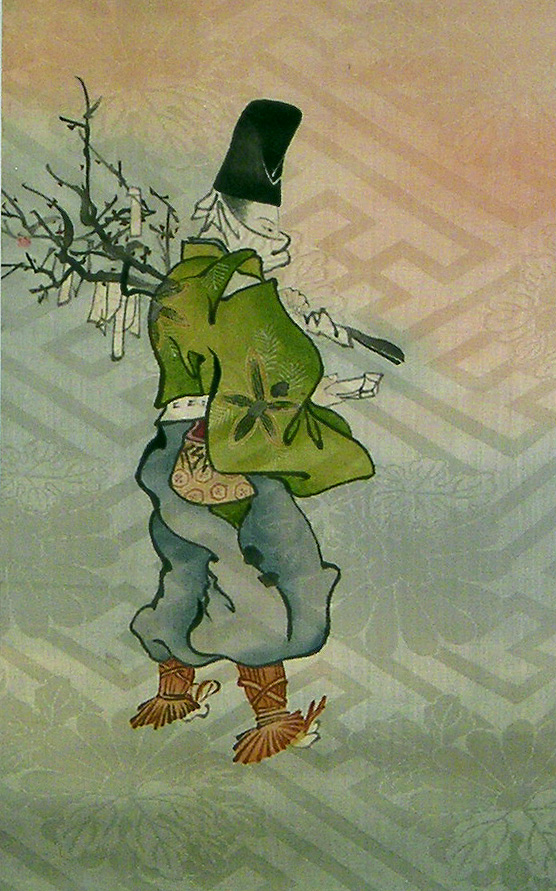Description
This very rare Woodblock on hand woven Silk, featuring pattern on pattern “Meiji jimon” weave, was the center of interest on the back of a “Nagajuban,” or Man’s Under kimono. The kimono clad Mother and Daughter are reading from a parchment, ostensively on their return from the Shinto Shrine (“O-miya) where they would have tied their New Year Fortune papers (“O-mikuji”) to a bush or branch, in the hopes that the gods (“Kami”) would fulfill their wishes for an auspicious year and annul any unfavorable occurrences. On the right, a workman carts away a tree limb, obviously from the same local Shrine, still sporting the New Year’s Fortune papers left behind by the supplicants to the Shrine. As is typical in Japan, workmen not only wear masks tied across the lower half of their faces, but gloves as well. The blue denim trousers and the straw leg coverings mark this as a rural area; while the numerous kimono worn by the females, and the styled hair of the mother, mark these two as members of a higher ranking family.
The background weave of this marvelous heirloom fragment consists of a geometric pattern with chrysanthemums and Paulownia leaves, both of which serve as symbols of the Imperial Court. Japanese art can be found as easily on textiles, especially silks, as on paper; but a Woodblock with as many colors as this one was extraordinarily difficult and time consuming. The Woodblock Print became most famous during the Edo Period (1615-1867), and underwent several transitional stages. It was not until the late 1750’s that 3 or 4 colors were possible, and these were achieved through the individual carving of separate blocks of wood from which the parts that were not to be printed were discarded. The focal point of these genre prints eventually became that of the “Floating World,” or the “Pleasure Quarters” of Kyoto and Edo (Tokyo). This one is, therefore, an earlier example, as the focal point of the subject is not a Geisha, but ordinary individuals from a more pastoral life, referred to as the Yamatoe style. The colors of this Woodblock Print are still vibrant, and the man who was able to afford to hide such expensive decoration on an Under kimono must have been of very high rank or status and very wealthy; someone who, in all likelihood, supported his local Shrine.
**This is the only Woodblock on Silk in this condition that I have found in 23 years of searching Japan.
A Certificate of Authenticity is included.
Professional packing and shipping provided within the continental United States







